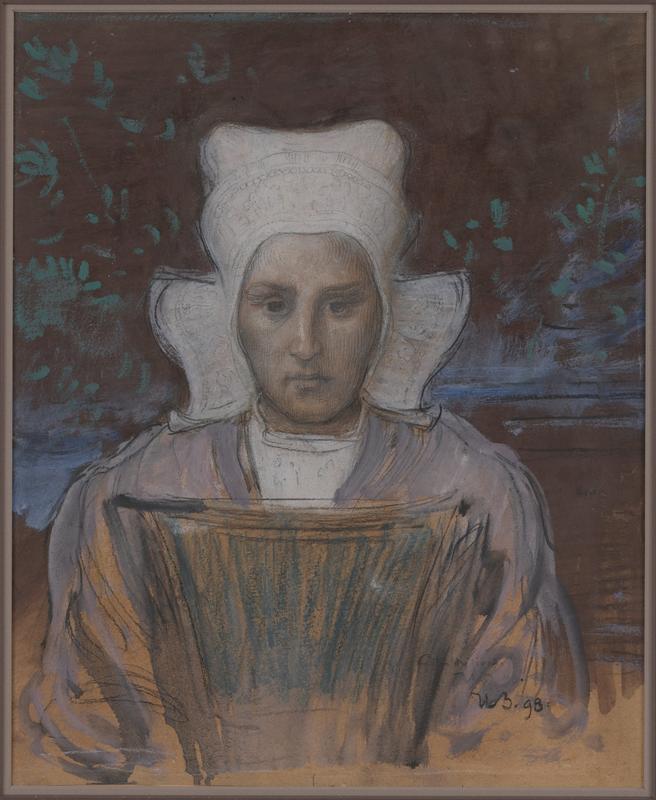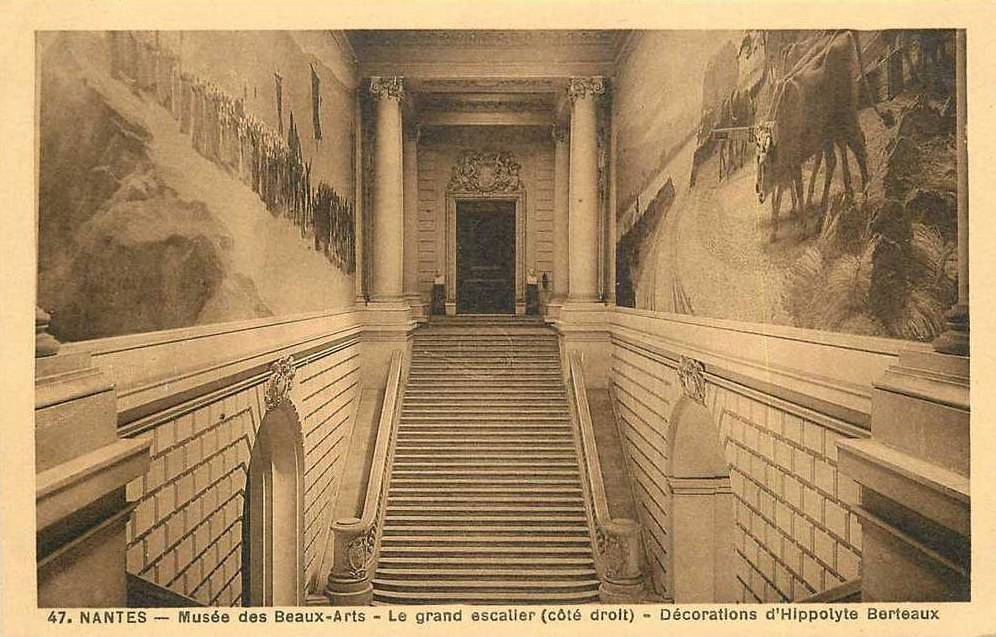
19. Hippolyte Dominique Berteaux, Breton Woman, Study for “Mystical Brittany”
| Artist | Hippolyte Dominique Berteaux, French, Saint-Quentin, Aisne 1843–Paris 1928 |
| Title, Date | Breton Woman, Study for “Mystical Brittany”, 1898 |
| Medium | Watercolor, gouache, and charcoal on tan paper |
| Dimensions | 15 3/4 × 12 9/16 in. (40 × 32 cm) |
| Inscriptions + Marks | Lower right: HB 98 |
| Provenance | [Galerie Jacques Fischer, Paris, until 2016; to Weisberg]; Yvonne and Gabriel Weisberg, Minneapolis |
| Exhibition History | "Reflections on Reality: Drawings and Paintings from the Weisberg Collection," Mia, 2022–23 |
| Credit Line | Promised gift of Gabriel P. and Yvonne M.L. Weisberg, Minneapolis |
The nineteenth century saw a proliferation of murals in France, not just in churches but in museums, train stations, post offices, and town halls. How better, civic leaders reasoned, to teach citizens about their history and culture? During this golden age of mural painting, the Musée des Beaux-Arts, or Museum of Fine Arts, in Nantes built a new home. Construction began in 1893, and the building was dedicated in 1900. Hippolyte Berteaux was commissioned to create two enormous scenes to line its grand staircase. The murals, each more than 25 feet tall and 68 feet wide, were to feature Breton subjects in recognition of Nantes’s historical roots in the duchy of Brittany. One mural celebrated the Breton countryside and its tradition of threshing wheat; the other, titled Mystical Brittany, was devoted to religious customs. The present sheet is a preliminary drawing for the latter (fig. 1).1

The theme of Mystical Brittany is the Brittany Pardons, yearly events held to commemorate the patron saint of a church or chapel. The highlight is the procession of pilgrims, fully attired in Breton dress, who pay homage to the saint. The Weisberg Collection contains two preparatory drawings for this mural, which was completed in 1904. One shows a man in traditional costume flanked by altar boys (cat. no. 20). The present drawing focuses on a single pilgrim. As Berteaux developed his composition, he produced many more such drawings: his training at the French academy would have emphasized the importance of creating multiple preliminary sketches before executing such a large, complex painting.2
The work-themed mural can still be seen on the wall of the art museum in Nantes, but the mural Mystical Brittany has suffered significant damage and remains in storage.
GPW
Notes
Bretagne mystique (Mystical Brittany), 1904, Musée d’Arts de Nantes, France (inv. 812), https://www.latribunedelart.com/spip.php?page=docbig&id_document=45994&id_article=8850. ↩︎
Examples of such drawings can be found in various French museums. These include a group of women carrying a statue of the Virgin (Nantes, inv. 7257, 973.2.1.D), a group of drummers (Centre Pompidou, Paris, inv. LUX.0.56 D), and women carrying what appear to be long candles (Rennes). A drawing in the Petit Palais, Musée des Beaux-Arts de la Ville de Paris (PPD1351), catalogued as being preparatory to Mystical Brittany, is dated 1906, which raises the possibility that Berteaux dated some of his drawings when they left his hands rather than when he made them. ↩︎